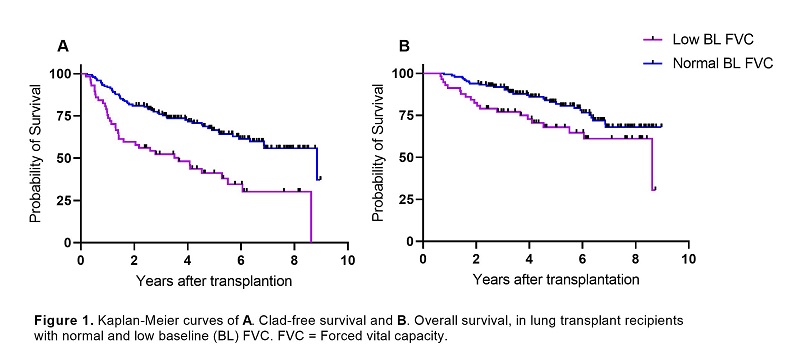Abstract
Background: Chronic lung allograft dysfunction (CLAD) is defined as reduced pulmonary function from the best (baseline) values achieved after lung transplant (LTx), in the absence of other causes.
Objective: To determine the association between low baseline values (lowBL), CLAD, and survival.
Methods: Data from bilateral LTx recipients from 2014-2020 were collected. CLAD was defined by ISHLT criteria, and lowBL as failure to achieve ?80% predicted for FEV1, FVC, and TLC and ?75% of predicted for DLCO. Cox proportional hazards models were used to assess associations between lowBL, CLAD and death.
Results: In total, 205 LTx patients (52% male) were included in the study (mean (SD) age 53±12 years). Sixty patients (62% male) were diagnosed with CLAD. In the overall cohort, median CLAD-free survival was 6.9 years. In univariate analyses, lowBL for FEV1 (hazard ratio [HR] 1.79 [95%CI 1.18-2.73], p=0.007), FVC (HR 2.42 [95%CI 1.58-3.70], p<0.001), and DLCO (HR 1.70 [95%CI 1.11-2.61], p=0.016) were all associated with reduced time to CLAD or death, while lowBL for TLC was not. In a multivariable cox model, only lowBL FVC (HR 2.24 [95%CI 1.20-4.18], p=0.011) was associated with higher risk of death or developing CLAD. Time from LTx to CLAD or death was also reduced in those with lowBL for FVC (figure 1).
Conclusion: LowBL FVC predicts increased risk of developing CLAD and impaired survival in bilateral LTX patients.